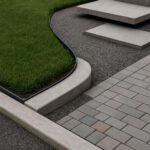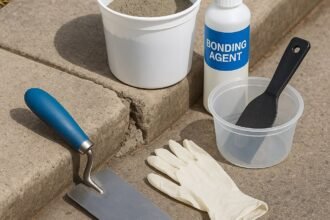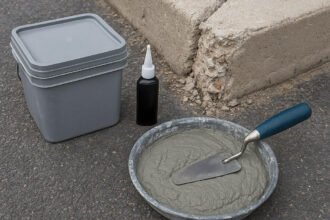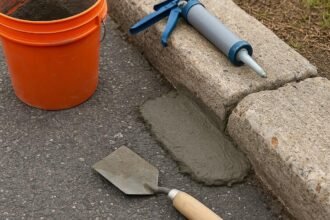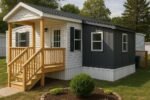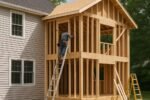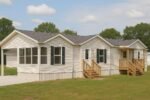Designing the perfect curb for a small yard requires a balance of creativity, efficiency, and strategic planning. Small spaces come with challenges, but with the right design approach, they offer incredible opportunities to craft charming, functional, and visually stunning front or backyard landscapes.
In this article, we’ll explore expert ideas and strategies for curb designs suited specifically to small yards. From layout tips and material choices to plant selections and low-maintenance solutions, this guide is tailored to help homeowners make the most of their limited outdoor space while significantly boosting curb appeal.
Why Curb Appeal Matters (Even in Small Yards)
First impressions are powerful, and your home’s curb is the first thing guests or potential buyers see. A well-designed curb:
- Adds visual harmony to your home’s façade
- Increases property value
- Creates a welcoming, warm atmosphere
- Enhances space utility in narrow or compact lots
Best Curb Design Strategies for Small Yards
1. Layered Planting for Depth
Small yards benefit greatly from the illusion of depth. Use a layered planting design—taller shrubs or ornamental grasses at the back, mid-height perennials in the middle, and groundcover or low-blooming flowers in front. This creates a visually full and lush look without crowding the space.
Recommended plants:
- Boxwood
- Lavender
- Sedum
- Dwarf fountain grass
2. Compact, Functional Hardscaping
Instead of sprawling patios or wide walkways, opt for:
- Narrow flagstone paths
- Stepping stone trails
- Brick or gravel edging
These hardscape elements can provide visual structure and walking functionality while preserving green space.
3. Raised Beds and Vertical Elements
Raised planters add dimension and height, which visually expands a small space. Combine this with vertical trellises, climbing plants, or hanging wall gardens to maximise green without taking up ground area.
Ideas include:
- Cedar raised beds
- Iron trellises with jasmine or clematis
- Wall-mounted herb gardens
4. Defined Borders and Edging
Clean, crisp edging—using bricks, metal, or natural stone—helps define spaces, making even the smallest yards feel intentional and elegant. It prevents mulch or gravel from spilling and adds a neat aesthetic.
5. Use of Mirrors and Reflective Surfaces
A modern trick borrowed from interior design, outdoor mirrors or water features can reflect light and greenery, giving the illusion of a larger, more open space.
Place mirrors along fences or walls to amplify the sense of space.
6. Curved Lines Instead of Straight
Incorporate soft, sweeping curves in pathways or flower bed borders to enhance movement and make the yard feel more organic and expansive. Curves tend to make the eye travel, giving the illusion of space.
7. Multi-Functional Furniture and Décor
Benches that double as storage, planters that act as partitions, or lighting that doubles as sculpture—every element should serve multiple purposes to reduce clutter and add charm.
8. Low-Maintenance Planting for Easy Care
If you want your curb appeal to last without demanding too much maintenance, go for drought-tolerant and native plant species. Not only do they require less watering, but they are also more resilient to your climate.
9. Colour Palette Consideration
For small yards, stick with a tight colour palette. Whites, greens, purples, and cool-toned flowers tend to make the space look larger. Avoid overly bright or clashing combinations.
10. Lighting for Highlight and Security
Add solar path lights, uplighting for trees, or sconces on fencing to ensure the curb remains visually striking after sunset. Lighting also enhances safety and security.
FAQs on Curb Designs for Small Yards
What is the cheapest way to improve curb appeal in a small yard?
The most budget-friendly options include fresh mulch, repainting the front door, using inexpensive border edging, or planting fast-growing annuals. These changes offer maximum impact for minimal investment.
Can landscaping make a small yard look bigger?
Yes. Strategic use of vertical space, layered plants, colour theory, and curved lines can visually enlarge a space. The key is creating movement and depth.
How do I choose the right plants for my small yard?
Choose plants that match your climate, sunlight exposure, and desired maintenance level. Use dwarf varieties to avoid overcrowding, and prioritise plants with long blooming seasons or evergreen leaves for year-round interest.
Should I hire a landscape designer for a small yard?
While not necessary, a landscape designer can help maximise limited space with a professional layout. However, many homeowners successfully design their small yard curb appeal projects with a little research and creativity.
What curb design mistakes should I avoid?
Avoid cluttering the yard with too many features, neglecting scale, planting without a plan, or ignoring maintenance requirements. Simplicity and balance are key.
Conclusion: Small Yards, Big Potential
The size of your yard should never limit your curb appeal goals. With thoughtful curb design strategies—focusing on layering, vertical elements, strategic hardscaping, and simple aesthetics—you can transform even the tiniest yard into a show-stopping exterior space.
Whether you’re enhancing your home for personal enjoyment or preparing it for sale, investing in smart curb design is always a worthwhile endeavour.

